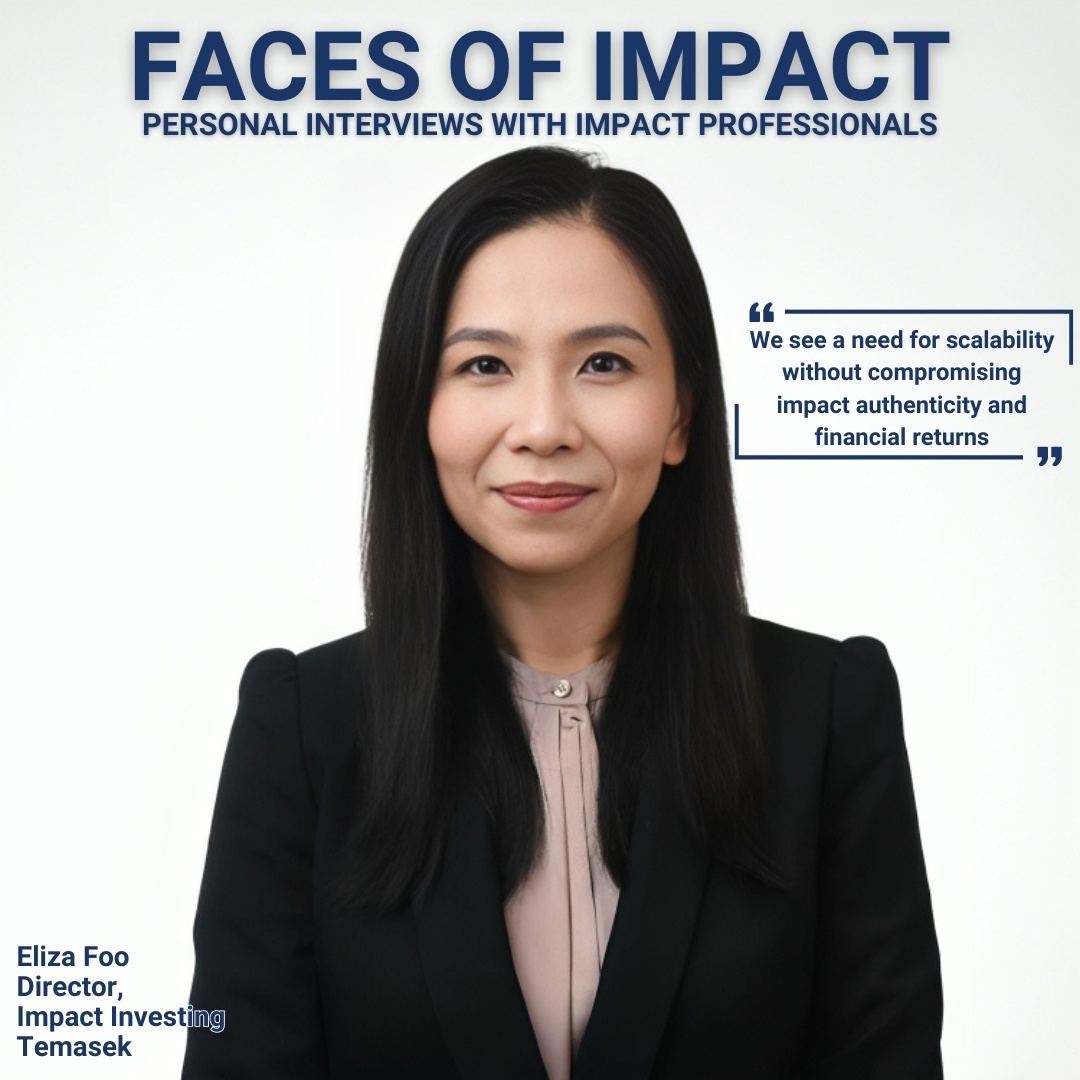
HOW DID YOU GET INTO IMPACT INVESTING? AND WHAT HAS BEEN THE HIGHLIGHT OF YOUR CAREER?
After 20 years of experience, I could identify two main parts in my career. I first started my career in investment banking and private equity, where I worked for eight years learning from the best. However, I felt a desire to find more purpose in my work and contribute positively to the world. I discovered impact investing which was just coined in 2007 and decided it was where I wanted to focus my career. I then transitioned into impact and sustainable investing. Over the past 12 years, I've had two key phases: first, spending 7 years in renewable energy in Southeast Asia, where I was involved in various aspects of projects from origination, construction, portfolio management to exits; and then, the last 6 years with Temasek, where I was part of the pioneer sustainability team defining our strategy.
A major highlight for me came in 2019 when we strategized and launched our Impact Investing strategy, aiming to make a meaningful contribution to the industry.
CAN YOU SHARE AN EXAMPLE OF A SUCCESSFUL IMPACT INVESTMENT YOU HAVE MADE, AND HOW IT HAS CREATED POSITIVE CHANGE?
At Temasek, we prioritize making a positive impact on underserved communities in emerging markets across Asia, Africa, and Latin America, while achieving sustainable returns over the long-term. We mainstream impact by investing in experienced impact GPs and high-impact companies, as well as contribute to the ecosystem by capability building and thought leadership.
I'd like to highlight two examples. The first is our US$500m strategic partnership with LeapFrog in 2021 which is among the largest commitments to an impact investor. It has been a true partnership where we both look to add value to each other in terms of investments, impact, fundraising, institutionalisation of organisation, etc.
In terms of impact, to date LeapFrog companies have reached over 500 million people with essential services.
Secondly, I’d like to highlight Sarvagram, a company in India that provides financial and productive solutions to the rural economy in India. With 89% of India's 180 million rural households lacking access to formal financial services, Sarvagram's innovative solutions, which combine high-touch and high-tech approaches, have significantly stimulated productivity and improved livelihoods in rural communities.
These examples demonstrate our commitment to mainstreaming impact and contributing positively to the ecosystem through strategic investments and partnerships.
WHAT DO YOU THINK IS MISSING IN THE INDUSTRY?
In the industry, we see a need for scalability without compromising impact authenticity and financial returns, particularly in emerging markets where many funds and companies are still relatively small.
Additionally, there are gaps in impact data measurement, particularly on the social side, and a lack of standardised impact performance benchmarks across funds. To address these challenges, we're supporting initiatives like the GIIN Impact Lab to develop impact benchmarks. In Asia especially, impact capabilities (such as skill sets and research) are still nascent and that’s why we supported the launch of the CIIP (Centre for Impact Investing and Practices) as strategic investors. They look to develop research, tools and training for the impact ecosystem in Asia and beyond.
DO YOU HAVE ANY RECOMMENDATIONS FOR IMPACT INVESTORS AND FUND MANAGERS STARTING THEIR IMPACT JOURNEY?
For impact investors and fund managers embarking on their impact journey, I have a few recommendations. Firstly, don’t view impact as merely a checklist or process; instead, prioritize developing a robust impact thesis. Identify the specific challenge you aim to address or the impact you seek to achieve, and strategize on how to accomplish it effectively.
Secondly, start now. Don’t wait for the perfect solution, as there isn’t one. Start the journey and you can learn and collaborate along the way.
Lastly, focus on adding value. Explore how you, as an investor, can contribute to and amplify the impact of the companies you invest in.
FINAL QUESTION: WHAT ARE THE MOST USED (AND ABUSED) CLICHÉS IN SUSTAINABILITY THAT BOTHER YOU?
One of the most prevalent clichés in sustainability that bothers me is the misconception that impact investing is inherently concessionary and cannot achieve market returns, despite evidence to the contrary.
What's particularly promising is the role of technology and mobile/digital platforms as enablers for positive impact at scale, affordability, and profitability in emerging markets. The key lies in identifying business models that effectively align both financial and impact key performance indicators (KPIs), demonstrating that sustainability and profitability can go hand in hand.
Elise Zhao, Impact Investing Officer, Lumina Impact Ventures
HOW DID YOU GET INTO IMPACT INVESTING?